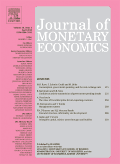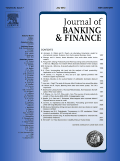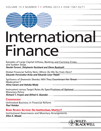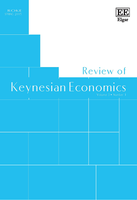
International Journal of Central Banking
Scope & Guideline
Navigating the Future of Economic Policy
Introduction
Aims and Scopes
- Central Banking Frameworks:
Research on the structure and functions of central banks, including their roles in monetary policy implementation, regulation, and financial stability. - Monetary Policy Analysis:
Exploration of the effects of various monetary policies, including conventional and unconventional tools, on the economy, prices, and financial markets. - Financial Stability and Risks:
Examination of systemic risks, financial crises, and the mechanisms through which central banks can mitigate such vulnerabilities. - Empirical and Theoretical Modeling:
Development and application of quantitative models to analyze monetary policy outcomes, financial stability, and economic forecasts. - Interplay between Macroeconomics and Banking:
Investigations into how macroeconomic factors influence banking operations and vice versa, particularly in the context of credit supply and demand. - Regulatory Frameworks and Macroprudential Policies:
Assessment of regulatory measures and their effectiveness in promoting financial stability and addressing systemic risks.
Trending and Emerging
- Digital Currencies and Payments:
A surge in research on central bank digital currencies (CBDCs) and the implications of digital payment systems, reflecting the growing importance of technology in finance. - Impact of COVID-19 on Monetary Policy:
An increasing focus on the effects of the COVID-19 pandemic on monetary policy frameworks, economic recovery, and financial stability, highlighting the need for adaptive strategies. - Macroprudential Policy Integration:
Growing interest in how macroprudential policies can be integrated with monetary policy to enhance financial stability and mitigate systemic risks. - Behavioral Economics in Monetary Policy:
Emerging studies that utilize behavioral economics to understand consumer and market responses to monetary policy, especially in the context of expectations and uncertainty. - Sustainability and Green Finance:
A notable trend towards researching the role of central banks in promoting sustainability and addressing climate change through monetary policy and asset purchase programs.
Declining or Waning
- Traditional Monetary Policy Tools:
There is a noticeable decrease in research focusing solely on traditional monetary policy instruments, as the journal increasingly emphasizes unconventional approaches and the impacts of new tools. - Fixed Exchange Rate Regimes:
Research regarding fixed exchange rate systems and their implications for monetary policy has diminished, reflecting a broader trend towards floating exchange rates and market-driven mechanisms. - Inflation Targeting:
While inflation targeting remains relevant, studies specifically focused on its traditional frameworks seem to be decreasing, likely due to evolving approaches to monetary policy in response to contemporary economic challenges. - Historical Analyses of Monetary Policy:
The journal has seen fewer papers focusing on historical perspectives of monetary policy, as current economic conditions drive a preference for contemporary analyses and forward-looking frameworks. - Microeconomic Foundations of Monetary Theory:
Research exploring the microeconomic underpinnings of monetary policy has become less frequent, indicating a shift towards macroeconomic and systemic perspectives.
Similar Journals

JOURNAL OF MONETARY ECONOMICS
Bridging Theory and Practice in Monetary EconomicsJOURNAL OF MONETARY ECONOMICS, published by Elsevier, stands as a premier platform for scholars and practitioners in the field of monetary economics. With a robust ISSN of 0304-3932 and E-ISSN 1873-1295, this esteemed journal has maintained a significant influence since its inception in 1975, continuing its legacy of rigorous scholarship through to 2024. The journal is recognized for its high impact in the field, boasting a Q1 category in both Economics and Econometrics and Finance as per the 2023 rankings. Its Scopus rankings underscore its prominence, with a top percentile standing in critical categories—a testament to its critical role in advancing research and discourse. While not an open-access publication, it offers invaluable insights for those dedicated to understanding complex fiscal dynamics and economic policies. The Journal of Monetary Economics serves as an essential resource for researchers, professionals, and students eager to explore the intricacies of financial systems and economic theory.

JOURNAL OF BANKING & FINANCE
Driving Real-World Impact with Financial InsightsWelcome to the Journal of Banking & Finance, a premier publication in the fields of finance and economics, expertly published by Elsevier. With its esteemed Q1 ranking in both the Economics and Econometrics and Finance categories for 2023, this journal frequently garners significant attention from researchers, professionals, and academics alike. Established in 1977, it has become a crucial resource for the latest research and advancements in banking and financial services, influencing policies and practices on a global scale. The journal's commitment to high-quality, peer-reviewed content ensures that it not only contributes to academic discourse but also drives real-world financial innovation. As part of the respected Elsevier publishing collection, the journal's rigorous standards and comprehensive analysis serve as indispensable tools for those seeking to understand and navigate the complexities of the financial landscape. Located in the Netherlands, the Journal of Banking & Finance continues to play a vital role in shaping the future of financial research through its impactful insights and research contributions.

JOURNAL OF FINANCIAL ECONOMICS
Advancing financial insights for a sustainable future.Welcome to the JOURNAL OF FINANCIAL ECONOMICS, a premier publication in the realms of finance, economics, and accounting, published by Elsevier Science SA in the Netherlands. With its impactful contributions since 1974, this esteemed journal has earned an impressive impact factor and consistently ranks in the Q1 category across various fields, including Accounting, Economics and Econometrics, Finance, and Strategy and Management. Researchers can access cutting-edge studies that delve into both theoretical frameworks and empirical analyses, crucial for advancing financial literacy and economic policies globally. With remarkable Scopus rankings, notably placing #2 in Accounting and #6 in Finance, the journal serves not only as a reliable resource for academics but also as a vital tool for professionals seeking to stay abreast of the latest financial trends and insights. Engage with the latest research and contribute to the dialogue shaping the future of financial economics!

International Finance
Empowering decision-makers with rigorous financial research.International Finance is a prestigious academic journal published by WILEY, dedicated to the exploration and advancement of theories and practices in the realms of finance, development, and geography. With a strong emphasis on empirical and theoretical research, this journal provides a crucial platform for researchers, professionals, and students to disseminate cutting-edge findings that shape our understanding of the financial landscape on a global scale. Holding an impressive impact factor and categorized in the Q2 quartile across multiple disciplines, including Development, Finance, and Geography, the journal has established itself as a significant contributor to scholarly discourse. Since its inception in 1998 and spanning until 2024, International Finance offers a comprehensive overview of current trends and challenges faced in financial contexts, enhancing the decision-making processes within academia and industry alike. Although the journal is not open access, its rigorous peer-review process guarantees high-quality content that is indispensable for anyone engaged in the diverse fields intersecting with finance.

Review of Keynesian Economics
Fostering Critical Analysis in Economic ParadigmsReview of Keynesian Economics, published by Edward Elgar Publishing Ltd, stands as a pivotal platform for scholarly discourse within the Economics and Econometrics field. With its ISSN 2049-5323 and E-ISSN 2049-5331, the journal has cultivated a robust reputation since its inception in 2012, recently earning recognition as a Q2 journal in its 2023 category rankings. The journal aims to delve into contemporary issues through the lens of Keynesian theory, fostering innovative research and critical analysis that challenges prevailing economic paradigms. Although the journal features no open access options, its rich repository of peer-reviewed articles provides invaluable insights for researchers, professionals, and students alike, making it a staple resource for those keen on exploring the evolving landscape of economic thought. With a Scopus rank of 300/716 in the realm of Economics, this journal occupies a notable position, reflecting its continued relevance and impact within the academic community.

B E Journal of Macroeconomics
Connecting researchers with critical macroeconomic discourse.B E Journal of Macroeconomics is a distinguished academic journal published by WALTER DE GRUYTER GMBH that serves as a critical platform for advancing the field of macroeconomic research. Established in 2001, it has gained recognition within the economics community, featuring a broad range of theories and empirical studies relevant to contemporary economic issues. With an impact factor reflective of its academic contributions, the journal is categorized in the Q3 quartile for Economics and Econometrics, ranking 607 out of 716 in its field according to Scopus metrics. The journal's scope includes a comprehensive exploration of macroeconomic trends, policy analysis, and the dynamics of economic systems, catering to researchers, practitioners, and students alike. Though primarily published in a traditional format, researchers have ample opportunities to access its invaluable content through institutional subscriptions, ensuring the dissemination of knowledge across the global economic landscape. Located in Berlin, Germany, B E Journal of Macroeconomics not only enriches the academic discourse but also fosters a deeper understanding of macroeconomic phenomena, making it an essential resource for anyone engaged in the field.

EKONOMICKY CASOPIS
Connecting Theory and Practice in Economic ResearchEKONOMICKY CASOPIS is a distinguished journal published by the Institute of Economics Research SAS and the Institute of Forecasting CSPS SAS, offering a comprehensive platform for the dissemination of innovative research in the field of economics and econometrics. Since its inception in 1978, the journal has been committed to fostering scholarly discourse, showcasing empirical studies, theoretical advancements, and policy analyses that contribute to the understanding of economic phenomena. Although categorized in the Q4 quartile in 2023 and ranking in the lower percentiles within Scopus, EKONOMICKY CASOPIS remains a critical resource for researchers and practitioners seeking to engage with the economic challenges of our time. As the journal continues to evolve through 2024, it invites contributions that align with its objectives of enhancing economic insights and promoting academic discussion in Slovakia and beyond. For researchers looking to publish their work or expand their knowledge, EKONOMICKY CASOPIS serves as a vital resource in the expanding landscape of economic research.

ECONOMIC MODELLING
Pioneering Research that Transforms Economic Modelling.ECONOMIC MODELLING, published by Elsevier, is a leading academic journal in the field of Economics and Econometrics, with a commendable impact factor that underscores its significance within the research community. Since its inception in 1984, this journal has been pivotal in disseminating high-quality research that contributes to the advancement of theoretical and empirical methodologies in economics. As a Q1 journal in its category, it ranks in the top 88th percentile according to Scopus, solidifying its reputation as an influential platform for economists and academicians. Although it does not offer open access, the journal maintains a robust subscription model, ensuring wide distribution of critical insights and findings. Researchers, practitioners, and students are encouraged to engage with the latest developments in economic modelling, making ECONOMIC MODELLING an essential resource for anyone seeking to understand and contribute to the evolving landscape of economic theory and application.

JOURNAL OF MONEY CREDIT AND BANKING
Unveiling Trends in Money and CreditJOURNAL OF MONEY CREDIT AND BANKING, published by Wiley, stands as a premier academic outlet in the domains of finance, economics, and accounting. With an ISSN of 0022-2879 and an E-ISSN of 1538-4616, this journal serves as a vital resource for researchers seeking to explore the dynamic interactions between money, credit, and banking systems. Compiling groundbreaking research since its inception, the journal boasts an impressive Q1 quartile ranking across key categories in the 2023 metrics, reflecting its prestige in the fields of Accounting, Economics, and Finance. It ranks among the top in its class with a Scopus ranking that underscores its contribution and influence in scholarly discourse, especially in the evolving contexts of economic policy and financial markets. Although not available as an open-access publication, the journal’s commitment to high-quality peer-reviewed research makes it indispensable for professionals, students, and academicians aiming to stay abreast of developments in monetary theory and practice. With the aim of fostering scholarly exchanges, the JOURNAL OF MONEY CREDIT AND BANKING remains a cornerstone for advancing understanding and application of critical financial concepts.

Journal of Central Banking Theory and Practice
Elevating Understanding of Central Banking DynamicsThe Journal of Central Banking Theory and Practice, published by SCIENDO, is a leading open-access journal that has been providing valuable insights into the realms of central banking, monetary policy, and financial stability since its inception in 2012. With its ISSN 1800-9581 and E-ISSN 2336-9205, this journal emphasizes rigorous scholarly research, catering to a wide audience of economists, finance professionals, and academic researchers. Based in Germany, the journal has established a strong reputation, evident from its improved category quartiles - moving from Q3 in Economics, Econometrics, and Finance to a commendable Q2 in 2023. With an impressive Scopus rank of #83/288 in General Economics and a 71st percentile ranking, it stands as a pivotal resource for understanding current trends and practices in central banking. Authors are encouraged to submit high-quality, original research that fosters knowledge and advances the field. This journal not only disseminates significant findings but also promotes discussions that are critical for policymakers and stakeholders in the financial sector.